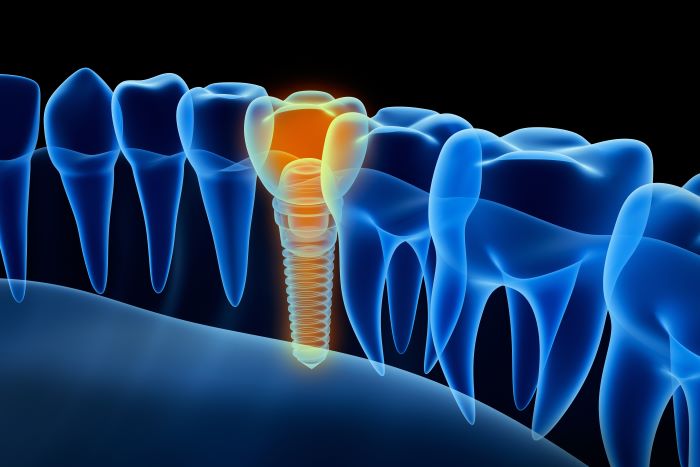Dental Implants 101: What to Know Before Replacing a Missing Tooth
Dental Implants 101: What to Know Before Replacing a Missing Tooth
Losing a tooth can be unsettling. Beyond the visible gap in your smile, it may change how you chew, speak, or even how you carry yourself around others. While dentures and bridges have been relied upon for decades, dental implants have become the go-to option for many people looking for a long-term, natural-looking solution. If you’ve been thinking about replacing a missing tooth, this guide will walk you through what implants are, how they work, and what to expect before getting one.
What Is a Dental Implant?
A dental implant is like a new root for your tooth. It is a tiny titanium post (or sometimes zirconia) that is placed into your jawbone. Over time, your bone naturally fuses with the implant—a process called osseointegration. Once healed, a crown is attached on top, giving you a replacement tooth that looks and functions almost like the real thing.
Unlike dentures, implants don’t shift or slip. And unlike bridges, they don’t require filing down neighboring teeth. They stand independently, making them the closest option to a natural tooth.
Why Replacing a Missing Tooth Matters
It’s tempting to ignore a missing tooth, especially if it’s not visible. But over time, it can create bigger problems:
- Bone loss: Without a tooth root, the jawbone starts to weaken.
- Shifting teeth: Nearby teeth may drift into the gap, affecting your bite.
- Chewing & speaking issues: Missing teeth can make it harder to eat or talk clearly.
- Confidence loss: Many people feel self-conscious and smile less after losing teeth.
The Dental Implant Process: Step by Step
Every patient is unique, but here’s what usually happens:
- Consultation & Evaluation: Your dentist reviews your health, takes X-rays or 3D scans, and checks bone strength.
- Implant Placement: The titanium post is surgically placed into the jaw under local anesthesia.
- Healing & Bonding: Over 3–6 months, the implant fuses with the bone to form a strong base.
- Final Restoration: An abutment and custom crown are attached, restoring your smile.
Who Is a Good Candidate?
Most adults missing one or more teeth qualify for implants. Factors that matter include:
- Healthy gums free from active gum disease
- Adequate jawbone density (bone grafting may be required if bone is thin)
- Good overall health (conditions like uncontrolled diabetes or heavy smoking can affect healing)
- Jaw growth completed (usually late teens or early 20s)
Benefits of Dental Implants
- They look and feel like natural teeth.
- They can last a lifetime with proper care.
- They prevent jawbone loss.
- They don’t affect nearby teeth.
- They restore chewing, speaking, and smiling confidence.
Common Myths About Dental Implants
- “They’re very painful.” Most patients say the discomfort is less than expected and easier than a tooth extraction.
- “They won’t last.” With proper care, implants can last decades or even a lifetime.
- “They’ll look fake.” Modern crowns are designed to blend seamlessly with your natural teeth.
Caring for Your Implant
Taking care of dental implants is simple:
- Brush twice daily and floss regularly.
- Visit your dentist for routine checkups and cleanings.
- Avoid chewing hard items like ice or pens to prevent damage.
Choosing the Right Dentist
The success of your implant depends on both your health and the dentist’s expertise. Look for a provider who:
- Uses advanced tools like 3D imaging and digital scans
- Creates personalized treatment plans
- Shows real before-and-after cases
- Explains all treatment options and potential risks
Final Thoughts
Losing a tooth doesn’t mean you have to live with discomfort or insecurity. Dental implants are one of the safest, most natural, and most long-lasting ways to restore your smile and protect your oral health.
Start Your Journey to a Confident Smile
👉 Ready to find out if you’re a candidate for dental implants? Book your consultation today. Call us or schedule online to take the first step toward a healthier, brighter smile that lasts.


